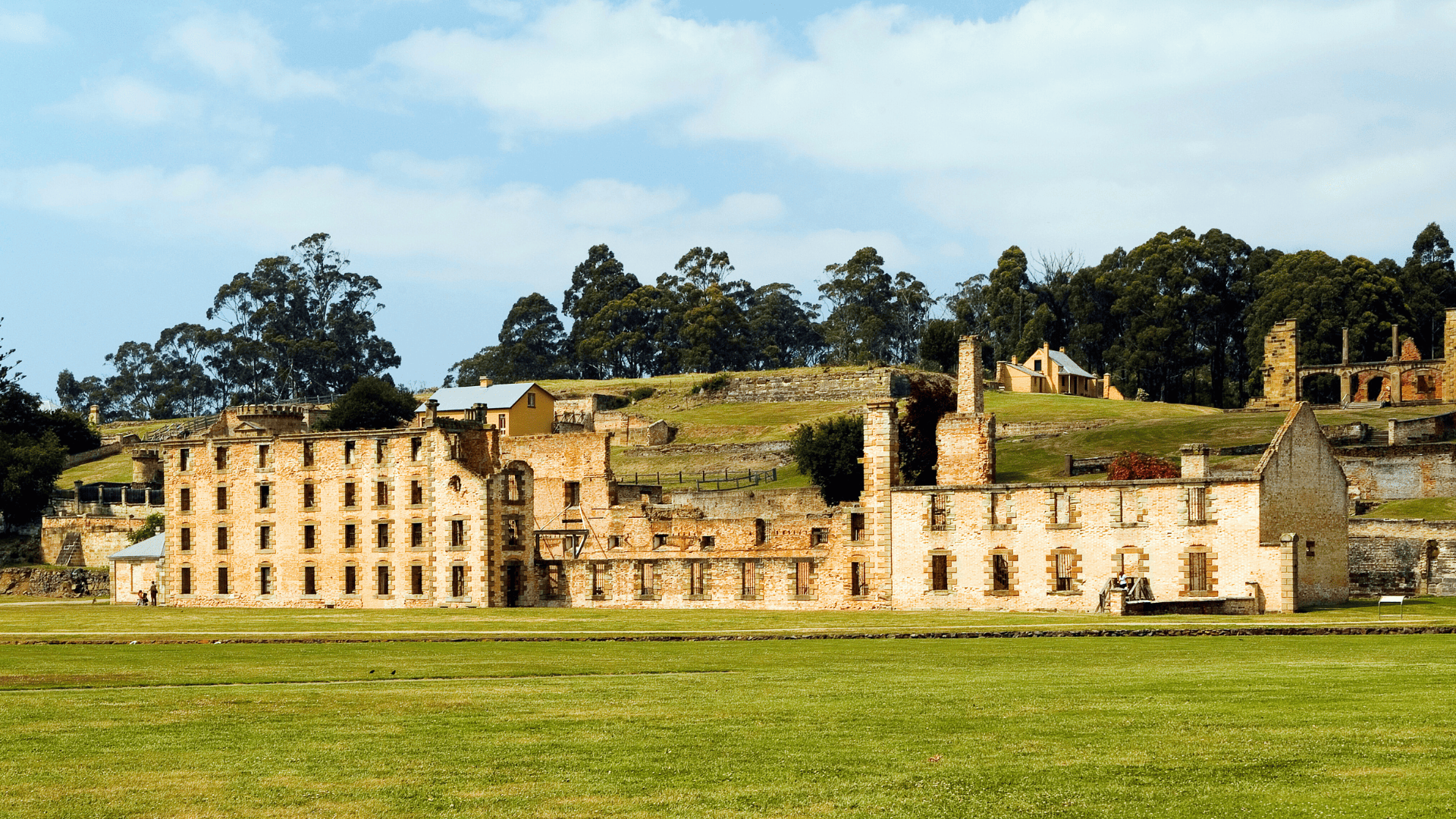Port Arthur & The Tasman Peninsula

Port Arthur: Australia’s Most Notorious Historic Convict Site
Port Arthur is a historic convict settlement and small town located on the Tasman Peninsula, about 2 hours east of Hobart. It’s easily one of Tassie’s top tourist attractions, with visitors flocking to see what life was like for convicts during the early years of European settlement in Tasmania.
Port Arthur’s Origin: Named after Governor George Arthur and built by the English during the 18th & 19th centuries.
Port Arthur Population: The site was once a bustling community housing well over 2,000 convicts.
UNESCO World Heritage Listed: Since 2010, Port Arthur has been a UNESCO World Heritage-listed site.
From Industry to Port Arthur Convict Prison
Port Arthur wasn’t just built for the purpose of imprisonment and criminal reform. Until it was transformed into a prison, the main industries of Port Arthur were timber felling, boat building, and brick making. The infamous Penitentiary was originally a granary and flour mill before housing convicts.
During the years Port Arthur operated as a prison, the convicts were extremely productive, and the boats and other materials produced here were considered some of the best in the country.

Could Convicts Ever Leave Port Arthur?
Only some convicts were deemed reformed and skilled enough to leave and live law-abiding lives in Tasmania.
Even fewer convicts successfully escaped from Port Arthur, given its strategic position on the Tasman Peninsula with only one exit – the geographical chokepoint of Eaglehawk Neck.
Guards and watchdogs were stationed at Eaglehawk Neck to stop runaways on both land and sea, making escape almost impossible. But that didn’t stop shrewd convicts like the famous Martin Cash, who managed to slip through and survive months away from Port Arthur as a bushranger.
Port Arthur Tour: The Isle of the Dead
In the bay adjacent to the historic site lies the Isle of the Dead, a small island that served as a burial ground. Even in death, there was social stratification, with free people buried on the highest sections of the island with headstones skilfully carved by the convicts. While the people of the least social standing were buried on the lower sections of The Isle of the Dead – many without headstones or grave markers.
Tour the Isle of the Dead: Experience all of Port Arthur with a guided cruise of the Isle of the Dead aboard the MV Marana.

Isle of the Dead Port Arthur Tour
Explore Port Arthur on a Premium, Fun Tassie Tour
Experience an expertly guided small group tour of the UNESCO-listed Port Arthur Historic Site, as well as an intriguing harbour cruise to the Isle of the Dead on one of our Tassie tours. Enjoy the perfect combination of engrossing history and panoramic scenery on one of our multi-day tours, with a Port Arthur tour included:
- 13 Day Tasmania Tour
- 10 Day Tasmania Tour in Circle
- 8 Day Tasmania Tour in Circle
- 5 Day East Coast Tour
See all our Fun Tassie Tours which include a guided Port Arthur tour.
Discover the Tasman Peninsula
About a 1.5-hour drive from Hobart, the Tasman Peninsula has fantastic attractions to complement your tour of the Port Arthur Historic Site.
Tessellated Pavement
The Tessellated Pavement at Eaglehawk Neck boasts some of the most unusual and unique rock patterns anywhere in the country. The Tessellated Pavement is a spectacular sightseeing destination, complimented by fantastic seascape vistas at the Pirates Bay lookout point and Tasman's Arch.
The Tessellated Pavement is a photographer’s delight and a must-see on the Tasman Peninsula.

The Tessellated Pavement
Cape Raoul
Nearing the bottom of the Tasman Peninsula is the extraordinary Cape Raoul lookout. Part of Tassie’s iconic multi-day Three Capes Track, Cape Raoul showcases impressive sea cliffs with imposing pillars of dolerite rock. Tasmania is unique in the world, with spectacular dolerite rock formations found nowhere else.
Climb the Cape Raoul lookout and gaze due south onto the Great Southern Ocean, where the next land mass is Antarctica, some 3,000km away.

Cape Raoul
